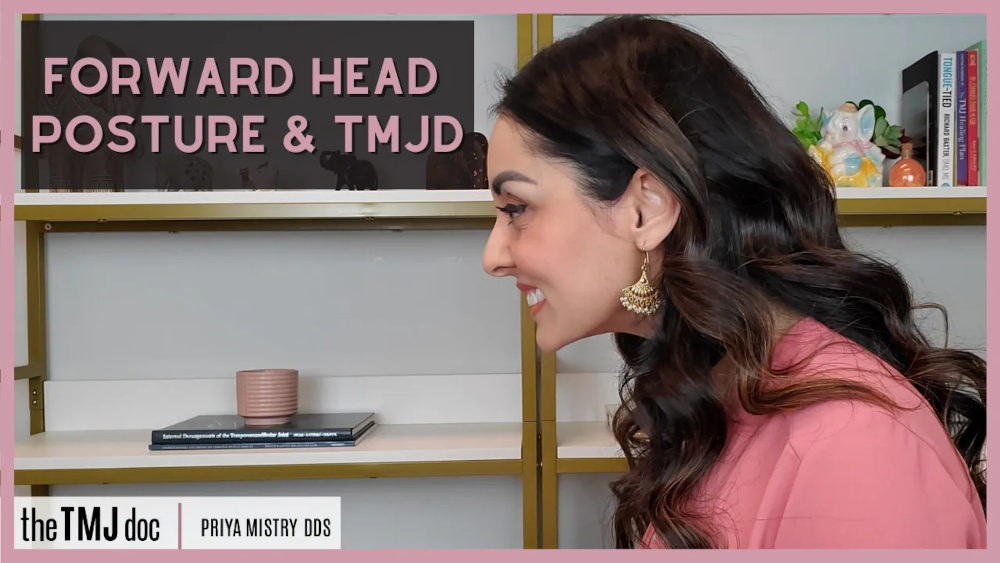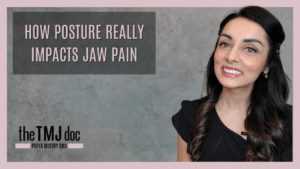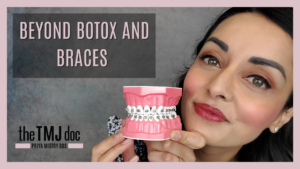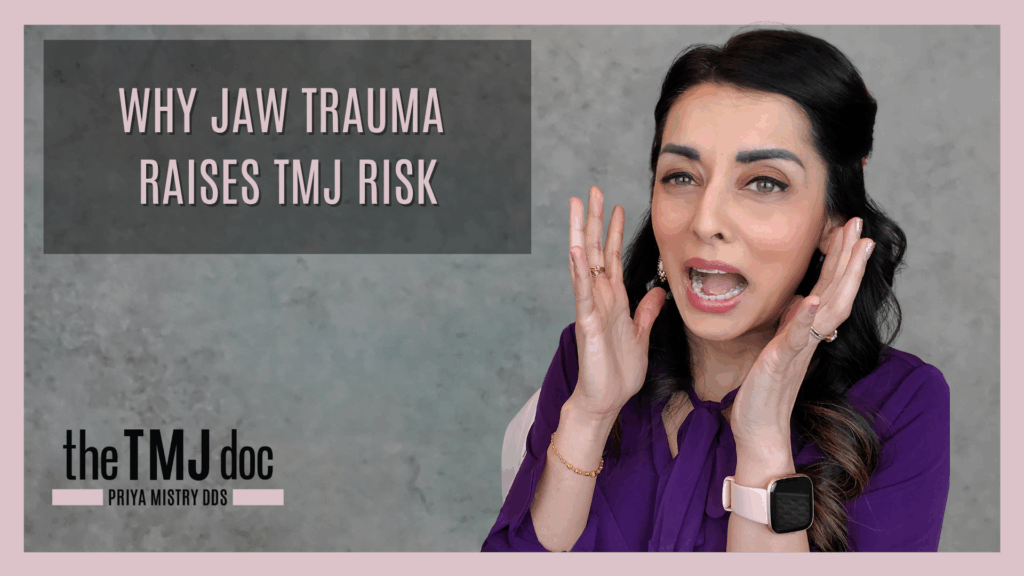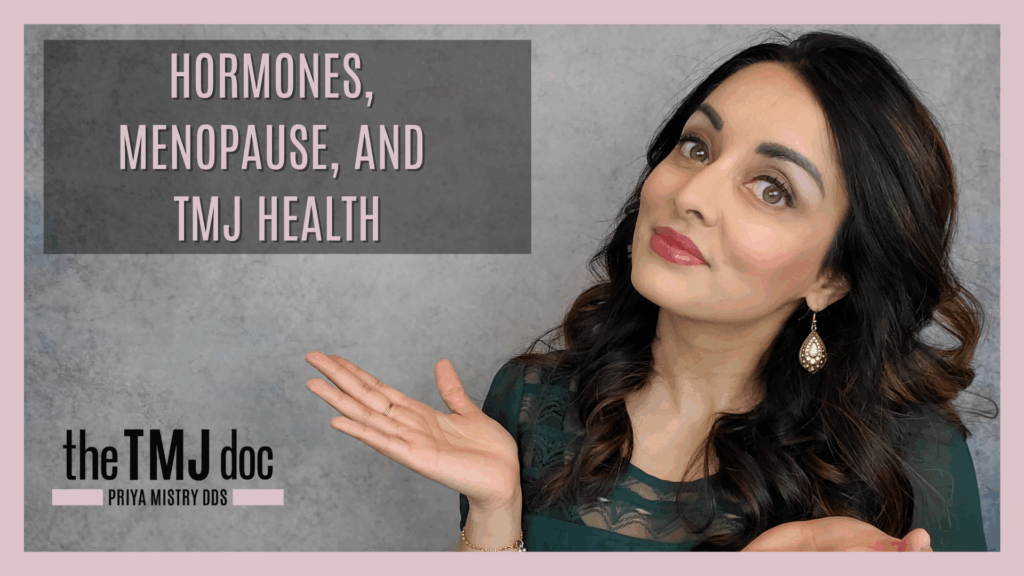Many of us have forward head posture because we are at the computer all day long or on our smart phones. Others of us have forward head posture because we are mouth breathers. Breathing through the mouth instead of the nose requires that the tongue is low and back in our mouths. When the tongue is low and back, this obstructs the airway – the air passage behind the mouth. Mouth breathers will compensate for this by tilting the head forward, which brings the jaw and therefore the tongue forward and out of the airway. For more information on mouth breathing, please watch my video “Nasal Breathing vs. Mouth Breathing”, which I’ve linked below. So what does all of this mean and how is forward head posture connected to TMJD?
Every inch that the head is forward from ideal puts an additional 10 pounds of pressure on the cervical spine and the neck! The human head weighs 10-11 pounds on average. If the head is forward one inch from ideal, that’s 20 pounds of pressure on the neck! Another inch is 30 pounds and so on and so forth. The muscles of the neck do NOT react well to all of this excess weight and pressure and this can lead to neck pain and dysfunction. Additionally, the neck and the jaw are intimately related which I’ve talked about in detail in my video “Neck Pain and TMJD”. For these reasons, forward head posture can lead to muscle dysfunction in the muscles of the head, neck, and jaw AND dysfunction within the jaw joint – clicking noises and even locking of the jaw. I see this time and again with my patients. There is a direct connection with forward head posture and TMJD. So what can you do about it?
If you have forward head posture ONLY because of working at the computer and/or being on your phone or a tablet all day long and you are certain you are NOT breathing through your mouth, then you can likely work with a physical therapist to help correct your posture. If you have forward head posture because you breathe through your mouth, that is a harder issue to fix. First, you must be able to breathe through your nose. Visit an ENT to establish whether you actually CAN breathe through your nose. Then, once you’re certain you can do that, the next step is to correct your tongue posture. This is done with myofunctional therapy. Do not attempt to correct your tongue posture on your own at home. Please seek assistance from a trained provider. For more information on this, please watch my videos “What is Myofunctional Therapy?” and “Tongue Posture Dos and Don’ts”. Once your tongue posture is corrected, then the final step is to see a physical therapist to address the head posture.

